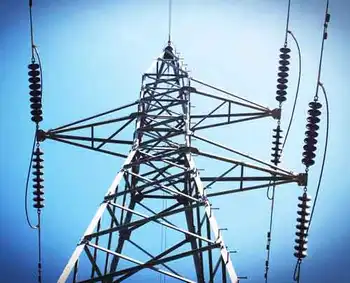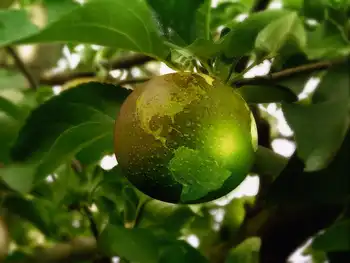Clouds appear in FloridaÂ’s solar future
Roughly 10 months later, Florida's time in the sun has darkened, with a smattering of renewable energy programs in place and other projects stalled.
Meanwhile, other states are busy promoting renewable energy policies aimed at reducing dirty fuel consumption and stimulating nascent solar manufacturers.
That Florida, with its bounty of sun-soaked land, might be left behind in the great solar race has become a source of concern among clean energy leaders. A crop of renewable energy projects planned across the nation in the next half decade will birth a lucrative industry, they say, and that is something Florida cannot afford to ignore.
At stake are thousands of new jobs each year and what could be the solution to the state's simmering debate over the use of foreign and increasingly controversial fossil fuels.
"We have this energy source that is renewable, it is safe, it is environmentally healthy, it can produce millions of jobs," said Neshama Abraham of the American Solar Energy Society in Boulder, Colo. "It is just that people need to wake up and know it is there."
It's not that Florida isn't a player in solar energy. Overall, Florida ranks fifth in the nation for its total grid-connected solar capacity.
But the gap between Florida and its rivals is vast.
Consider that all of Florida's solar panel installations combined produce 38.7 megawatts of direct current, or units of power, according to the Interstate Renewable Energy Council. In contrast, front-runner California produces 768 megawatts of direct current. New Jersey, in second place, produces 127.5 megawatts.
"Money is stopping it," said Nancy Argenziano, chairwoman of the Florida Public Service Commission, whose reappointment to the state utility board was recently rejected by lawmakers she claimed were bought off by powerful utilities, which are among the state's most generous campaign contributors.
"It has nothing to do with what is better for the country or the state," she said.
To be sure, solar energy is not cheap. It costs utility companies nearly 70 percent more than coal and gas, and personal equipment still requires a hefty investment from businesses and homeowners. Such market factors have hindered the industry's growth despite a heightened national focus on environmental policy and fossil fuel independence.
Still, Florida seemed poised to tackle those financial obstacles just four years ago.
Gov. Charlie Crist unveiled a raft of clean energy policies after his 2006 election that would force green power on the state's powerful electric utility giants and subsidize the purchase of solar energy equipment by businesses and homeowners.
The Legislature's Republican leaders played along at first. They funded a solar rebate program. They expanded the limit for solar power generation in the state, which Florida Power & Light, the state's largest electric utility, quickly reached.
The for-profit company followed its massive Arcadia plant with fields of shimmering solar panels in Martin County and Brevard County, importing more than 125,000 panels from a California company, where solar manufacturers receive financial incentives from the state.
The Arcadia plant single-handedly catapulted Florida from 16th to third place in grid-connected solar energy capacity installed in 2009. FPL also announced the start of Babcock Ranch, a planned community in southwest Florida's Charlotte County that would be the first solar-powered city in the world.
"There is no reason this state cannot be the national leader on solar and other renewables when they make sense," senior vice president Eric Silagy said.
Progress Energy, the state's other utility superpower, promoted a $450 rebate toward the purchase of a solar water heater. Roughly 3,700 customers took advantage of the offer.
A handful of the state's small public utilities companies also rolled out ambitious solar energy plans.
Florida's solar revolution, however, soon ground to a halt, and the political momentum abruptly shifted direction.
FPL says Babock Ranch is shovel-ready, meaning a shovel has yet to break ground.
In 2008, the Legislature allowed FPL and Progress Energy to charge customers for construction of proposed nuclear power plants in Florida - even if the plants ultimately don't get built.
The Legislature also slapped down Crist's 20 by 2020 plan, which would have required Florida power companies to produce 20 percent of their electricity from renewable energy sources by 2020. At least 26 other states have passed similar mandates.
Most recently, the Legislature stopped funding the state's solar rebate program in 2009, citing the stagnated economy. As of last week, the program's waiting list had climbed to nearly 16,000 businesses and homeowners waiting for promised rebates totaling $52.7 million.
"We need to push forward," Crist said Thursday, citing the Gulf of Mexico oil disaster. "If that's not the greatest wakeup call that we need to do more in solar and wind and other energy forms, I don't know what is."
What happens next will in some ways be determined by what voters do at the ballot box.
Florida's four gubernatorial candidates all call for diversified energy plans, but their goals vary widely.
Democrat Alex Sink and independent Bud Chiles want to promote solar energy through policy. Republicans Bill McCollum and Rick Scott support allowing the free market to sort it all out.
Federal energy leaders claim solar energy equipment will become more affordable than traditional electric sources by 2020. For free market proponents, that means solar energy can find its way without a government boost.
But solar energy advocates said clean energy is too important to leave to chance. They note government has a long history of advancing innovation and safety, from computers to space exploration to car seat belts.
Requiring clean energy would create an instant market, while subsidizing solar equipment would help lower investment costs for consumers, said James Fenton, director of the Florida Solar Energy Center at the University of Central Florida.
"If you set a market goal, then the industry knows that, 'Okay, Florida is going to buy this,' " he said.
Advocates also argue that government intervention could level the energy playing field.
Fossil fuels benefited from $72 billion in government incentives from 2002 to 2008, while subsidies for renewable fuels totaled $29 billion during the same time, according to the Environmental Law Institute.
"The government needs to tell us we need to stop burning and polluting the air," said Fenton, whose research estimates Florida could create 42,240 jobs next year if just 3 percent of all Florida homes retrofitted their homes for clean energy.
Internationally, early adopters Canada, Spain, China and Germany have all integrated solar energy use through mandates and subsidies. But you don't have to leave Florida to compare the two schools of thought.
On the market-driven side, FPL and Progress Energy want the Legislature to let them build more power plants, even though Florida's population is not growing and energy use has declined since 2003. The companies would then pass those construction costs to customers.
Solar, "is not a silver bullet for all of our energy needs," said Silagy. "It is only part of the solution and not all of the solution."
Meanwhile, several of Florida's small government-run utility companies have launched programs to encourage customers to invest in solar energy.
In Gainesville, for example, the public utility company is paying residents for energy generated from solar panels arranged on homes and businesses. That hurts the city's bottom line, but it is still cheaper than building a plant, said John Crider, a planning engineer for Gainesville Regional Utilities.
"Our prime purpose is not to make a big profit," he said. "We want to promote conservation."
Related News

Sen. Cortez Masto Leads Colleagues in Urging Congress to Support Clean Energy Industry in Economic Relief Packages
WASHINGTON - U.S. Senator Catherine Cortez Masto (D-Nev.) led 17 Senate colleagues in sending a letter calling on Congress to include support for the United States' clean energy industry and workforce in any economic aid packages.
"As Congress takes steps to ensure that our nation's workforce is prepared to emerge stronger from the coronavirus health and economic crisis, we must act to shore up clean energy businesses and workers who are uniquely impacted by the crisis," said the senators. "This action, which has precedent in prior financial recovery efforts, could take several forms, including tax credit extensions or removal of the…





